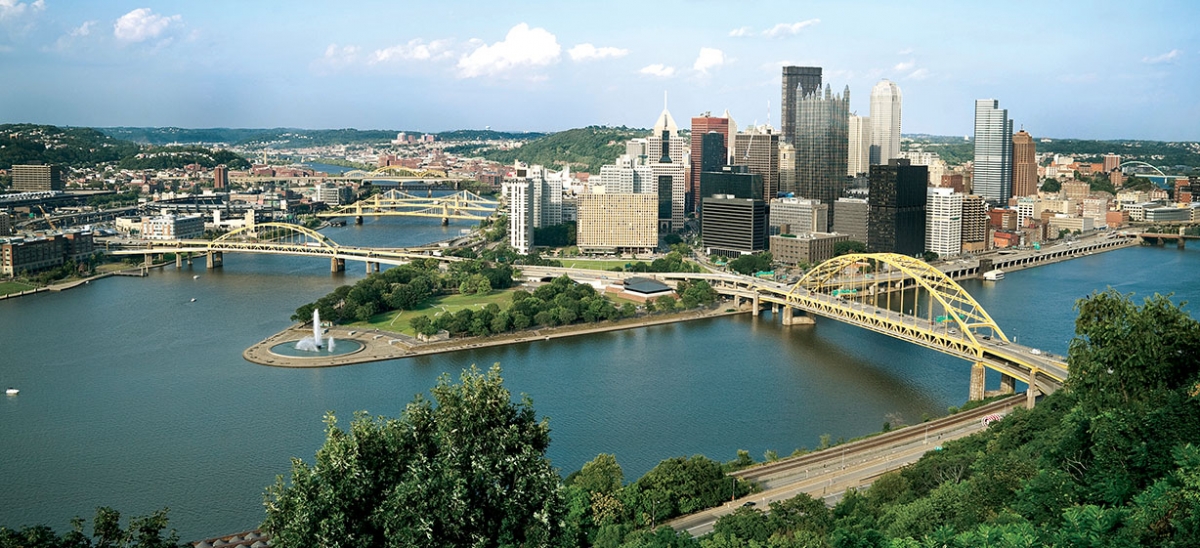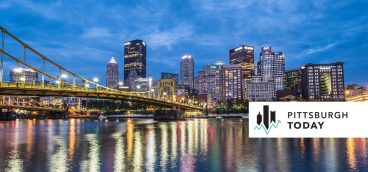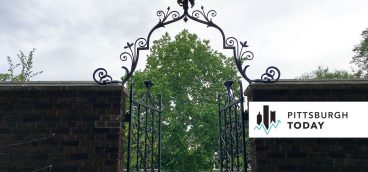The Path to Sustainability

Bike lanes and buses, clean water and clear skies, and prosperity without poverty and its corrosive effects—the vision of a sustainable city and region can seem like a Sim City blueprint for the ideal future. Until the nagging obstacles of reality are considered. And nowhere is that more true than in older, former industrial regions like southwestern Pennsylvania, where such challenges as aging infrastructure, difficult topography and fragmented government promise to keep the architects of sustainability busy for decades to come.
PittsburghTODAY looked at a range of regional indicators to get a glimpse of where southwestern Pennsylvania stands on the road to sustainability compared to its benchmark regions. As the charts show, southwestern Pennsylvania doesn’t rise to the top of any of the rankings, but it doesn’t live with those found at the bottom, either. It has well-defined strengths on which to build and weaknesses in need of shoring up. It has environmental concerns, such as poor air quality and river and stream pollution, but also boasts a stable economy and a capacity for public-private engagement that over the years has resolved some the thorniest of social and economic problems the region has ever faced.
At its core, sustainability is about a long-range investment in a prosperous future by promoting behaviors and practices that bolster the economy, the environment and social equity. It also offers a framework for addressing regional problems, says Court Gould, executive director of Sustainable Pittsburgh. “Sustainability is a broader way of thinking about the way in which issues connect and compound, and it helps to liberate us from a siloed worldview; it challenges us to be able to better see the way in which issues work together.”
The region’s challenges are complicated and entwined. Benchmarked against other regions, the Pittsburgh Metropolitan Statistical Area (MSA) has the second-lowest cost of living and lower-than-average unemployment. But even though its 12.1 percent poverty rate is below the benchmark average, it is still considered high. And about 10 percent of properties in the region stand vacant, a visible symbol of poverty and neighborhood decline.
Future prosperity and social equity depend on an educated population. With 92 percent of people in the Pittsburgh region holding a high school diploma or higher—one of the highest rates in the nation—very few people are without a basic education. However, only 30.5 percent of those people go on to receive a bachelor’s degree or higher, which ranks below all the other benchmark regions except Cincinnati, Cleveland and Detroit.
The region also continues to struggle with legacy environmental issues, including air and river and stream pollution, to say nothing of environment-related health issues, the understanding of which is still developing. The U.S. Environmental Protection Agency data for the Pittsburgh-Beaver Valley area, for example, show the region continues to exceed the annual health-based limits for ozone pollution.
A sustainable future likely depends on the capacity for a region to create public-private partnerships with a long-term perspective.
In December, Pittsburgh will host “Sustainability EXPOsed,” a day-long public exchange of ideas, discussion and best-practices around sustainability that includes a session during which the Allegheny Conference on Community Development will solicit recommendations to inform the public-private agency’s three-year plan for the region.
Meanwhile, the City of Pittsburgh is engaged in a comprehensive planning process that includes a high level of public involvement. And the Southwestern Pennsylvania Commission soon is expected to begin updating its regional plan, which directs the use of state and federal economic development and transportation dollars allocated to the 10 counties in the Greater Pittsburgh area. The importance of such planning processes to the sustainability of the region cannot be overstated. But alone, they are no guarantees the region will be able to successfully move sustainability from concept to practice, Gould says. “They are only as good as the diversity and depth of public participation in them, which is essential to long-term sustainability.”




